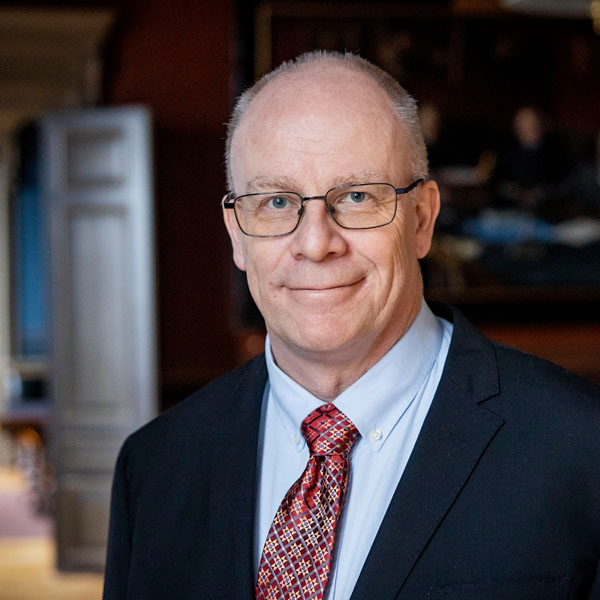One hundred years ago, the State Institute for Racial Biology opened here in Uppsala. It was a small institution, with only a handful of employees, but it was intended to mark a new era, of this there could be no doubt. The decision to establish the Institute was well prepared. An exhibition of Swedish ‘folk types’ in 1919 had made a great impression and paved the way. The formal decision was based on a parliamentary motion whose signatories included the former prime minister, right-wing politician Arvid Lindman, and – perhaps better known today – Hjalmar Branting, Sweden’s first Social Democratic prime minister. The debates following the motion in the Swedish Parliament had revealed a general consensus. The Institute was considered highly important and most speakers agreed that it was urgently needed. The reservations voiced were mainly of an organisational nature: should the Institute be independent or part of the University? The decision was in favour of independence and it was only in 1959 that the Institute was taken over by the University and transformed into a department of medical genetics.
The arguments adduced were simple and easily understandable. The ambition was to make Sweden a leader in this new modern field, which was described as crucial for public health. It would make it possible to trace hereditary diseases and prevent them from spreading, and would study and counteract the harmful effects of mixing what were perceived as superior and inferior ‘races’. Arguments were drawn from the animal and plant kingdoms. Artur Engberg, who ten years later would become Minister of Education and Ecclesiastical Affairs, with ultimate responsibility for the Swedish school system, pointed out, for example, that: “It is remarkable that while we are extremely concerned about the pedigrees of our dogs and horses, we show no interest at all in considering how to preserve the integrity of our own Swedish people.”
Heredity was in vogue as the principal explanatory model for human characteristics. Talk about the different value of different races provoked few protests in this context, such ideas being long established, particularly because of colonialism and the slave trade. Moreover, the rediscovery of Mendelian genetics in 1900 enhanced the scientific legitimacy of these ideas. As a result, the possibility of scientific study of the significance of genetics opened up in earnest, though this did not mean that established values disappeared; in some respects, they were instead reinforced.
The Institute began its operations at the beginning of 1922. It had a mandate to map the genetic profile of the population, with respect both to the majority, who were considered to belong to the ‘Nordic race’, and minority groups such as the Sami, Finns or descendants of the Walloons. All this happened in the name of science and public health. However, the director of the Institute, Dr Herman Lundborg, was a typical representative of racial biology based on the idea that genetics played a decisive role for both physical and mental characteristics, which were classified, moreover, as more or less valuable. This applied both within the same ‘race’, where differences of sex and social standing were regarded as primarily genetic, and to differences between ‘races’, which were classified as genetically superior or inferior. Lundborg devoted a great deal of his time to collecting material about the Sami ethnic group, mainly because he perceived any mixing of the ‘Nordic race’ with the Sami as a threat. This was not in line with the government’s expectations and the research on the Sami was therefore criticised. Having said that, one can wonder why it was allowed to continue at all.
From a modern perspective, the differences between contemporary medical ethical approaches and those of the early twentieth century are striking. It is obvious that the interests of the individual were regarded then as less important than they are now. The state of knowledge was scanty, moreover, and in racial biology the answer often preceded the question. The idea that different individuals had ‘better’ or ‘worse’ genetic preconditions, and that the same applied to ‘races’, was taken for granted by people like Lundborg rather than being treated as a theory to be investigated. Another factor was that the people studied were not considered worth listening to. Medical doctors had great authority in society in general and in relation to patients and research subjects, particularly if the latter belonged to groups that were already vulnerable.
This is not how we conduct science. The way that Lundborg proceeded does not constitute good research now, nor did it then. But history exhibits many examples of blinkers and tunnel vision. There is an inherent danger that abuses will occur when ideology and preconceived ideas govern the interpretation of facts.
Dividing people up, classifying them and grading them, as the Institute did, was therefore not as strange a hundred years ago as it is today. I think of my own wife, who grew up with apartheid in South Africa – a system that differentiated between people on the basis of their origin and the colour of their skin. It took many years of protests to bring that system down. I think of how it felt for my wife, when she got to be part of the welcoming committee that received Nelson Mandela when he was released from Victor Verster Prison near her hometown of Wellington on 11 February 1990. That was little more than thirty years ago.
Our verdict on racial biology is severe and we must remember that Lundborg did not act alone. He did not acquire his platform in a vacuum. Racial biology exemplifies a widespread view of human beings, in which less consideration was given to the interests of the individual than to those of the state or the nation. This applied in particular to individuals who belonged to groups with lower status than the male white middle class. The same pattern recurs in connection with compulsory sterilisation and the introduction of lobotomy, for example, where socially vulnerable women were the primary victims in both cases. The medical ethics that prevailed before the Second World War differed very considerably from those that emerged afterwards. The same is true of the generally accepted attitudes towards ethnic minorities, gender and, particularly, those with the most severe mental disabilities.
As this day approached, I have given a good deal of thought to the risk of science being kidnapped when it serves political ends – and to the way in which science can sometimes kidnap itself. I would also like to raise the question of which areas today will come in for criticism later. What will be the verdict of posterity on our slowness to tackle climate issues? What view will be taken of the free rein given to the development of artificial intelligence technology, while legislation, ethics and morality lag behind? How far have we actually come in our attitude towards other cultures? Do we even understand how exclusive our University can be perceived to be?
Here we have a duty to fulfil. We are a university. That means providing scope for dialogue and discussion. We do not need to agree with one another and think alike; here, truth is not dictated by the majority. Instead, our role is to ask, what can we learn? Which voices were not heard in the past? Which are not heard now? Research is a matter of testing ideas, proving, disproving, adjusting, testing again.
Today we remember the establishment of an institute. On the centenary of that establishment, we are turning a spotlight on part of Sweden’s dark history. Forgetfulness, silence and denial are the worst enemies of knowledge. Let us always also remember the errors of thought committed in the name of science, so that we can do better.


